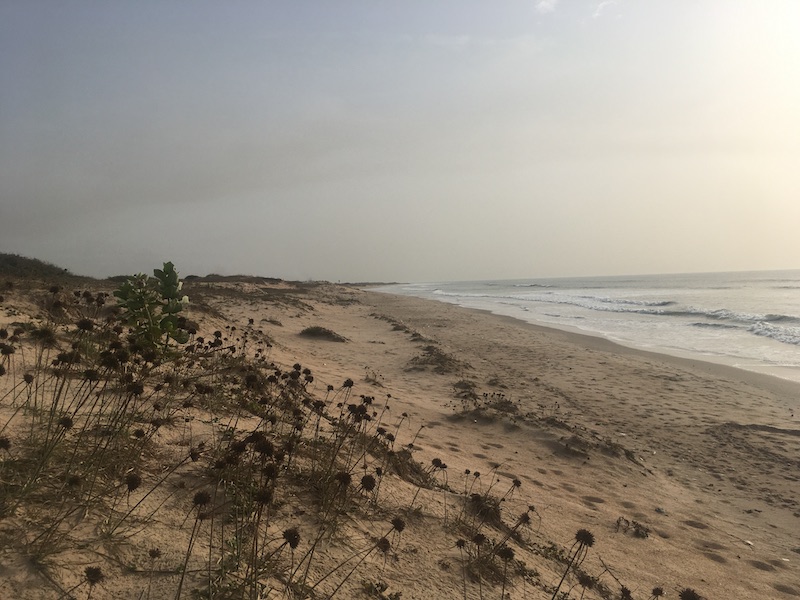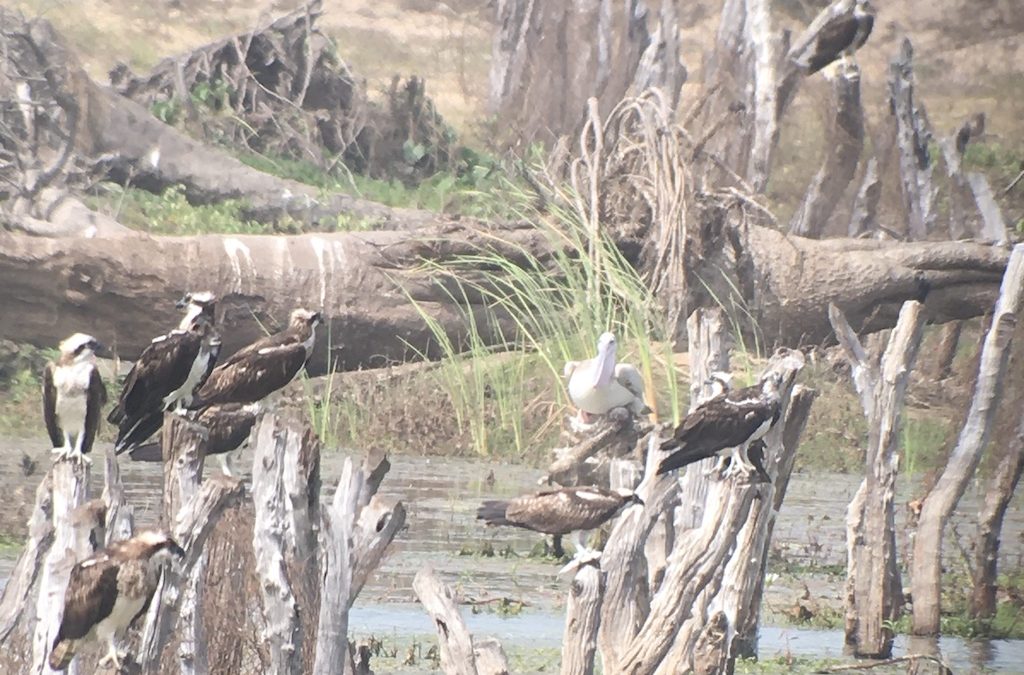As the early morning light glinted on the freshwater pools, the shrill call of a Wood Sandpiper alerted us to its presence. Nearby a Common Sandpiper was busily searching the water’s edge for food, and a small group of Barn Swallows passed by. Meanwhile, a lone Osprey, ever watchful, sat perched on low stump, the bird’s white underside glowing in the morning sun. It wasn’t long before a second Osprey appeared, and then a third. Suddenly the air was filled with a repeated plaintive ‘chip’ as the bird on the stump made the new arrivals aware that it was not about to give up its favourite perch. It was almost like being in the UK in spring, but then the melodious song of a Black-crowned Tchagra, and the vivid blue and orange of a diminutive Malachite Kingfisher, reminded us that we were in Africa; Gunjur in The Gambia, to be precise.
I was there with a group of Friends of OLF on our annual visit to The Gambia; in search of Ospreys, and to see some of OLF’s work. We were particularly keen to visit Gunjur Quarry on this trip because it has become a key site for Ospreys in winter. Colour-ringed birds from Foulshaw Moss in Cumbria and one of the juvenile Ospreys released at Poole Harbour last summer have been identified here recently, along with others from Germany.
Gunjur Quarry is one of several parts of the Gambian coast where sand mining has taken place in recent years. This has resulted in significant environmental degradation in some areas, but now that extraction appears to have stopped at this particular site – for the time being at least – an area of some 70 hectares nestled adjacent to coastal forest and protected from the sea by an area of sand dunes, floods with freshwater during the rainy season. This, in turn, provides valuable habitat for European migrants as well as a range of local African species as the dry season progresses, temperatures soar, and freshwater becomes harder to find.
On this particular morning it soon became clear that there were a lot of Ospreys in the area. One by one they started to appear from every direction. Some arrived from the sea with fish, while others flew out of the coastal forest which provides a safe roosting area at night. Many of the birds dropped into the water to drink and bathe, before alighting on fence posts and tree stumps dotted around the pools. By 08:30 we could see nine birds and by 10:00 the count was up to 25. We checked each bird in turn for colour rings and managed to identify four individuals from Germany. By the time we left at around 10:30 we estimated that we had seen at least 30 different individuals, including ten perched perched together on a 75 metre stretch of fence (photo above).
Gunjur Quarry was so good for Ospreys, and a range of other wetland species, that we returned several times during the trip. We identified a total of seven colour-ringed Ospreys during these visits, including five birds from Germany, one from Finland, and 019 – the Poole Harbour juvenile. The latter two birds were seen and photographed by Chris Wood who made a couple of additional trips to the quarry himself to add to three visits we made as a group.
The fact that the site lies between the sea and coastal forest means that all of the Osprey’s winter requirements are met in a very small area, and this explains the very high number of birds we encountered. Our peak count at any one time was approximately 30 birds, but it is likely that the actual number of birds wintering here may exceed 50, given that we only recorded some colour-ringed individuals on one occasion. This is a very high density in an area which, even when you include the coastal forest and beach to the south, is only around 8 km². It seems likely that juveniles, in particular, probably come and go and settle on the pools when they get a chance.
The number of Ospreys we observed makes Gunjur Quarry one of the most important wintering site for Ospreys in The Gambia at present, and, as we found out, it is also important for a range of other migratory and African species, including Marsh Sandpiper and Painted Snipe. It is vital, therefore, that this area is protected from any further sand mining, and we plan to do all we can to help local efforts in that regard.

Chris Wood photographed 019 , a juvenile Osprey released at Poole Harbour last summer, at Gunjur Quarry on the first afternoon of our trip
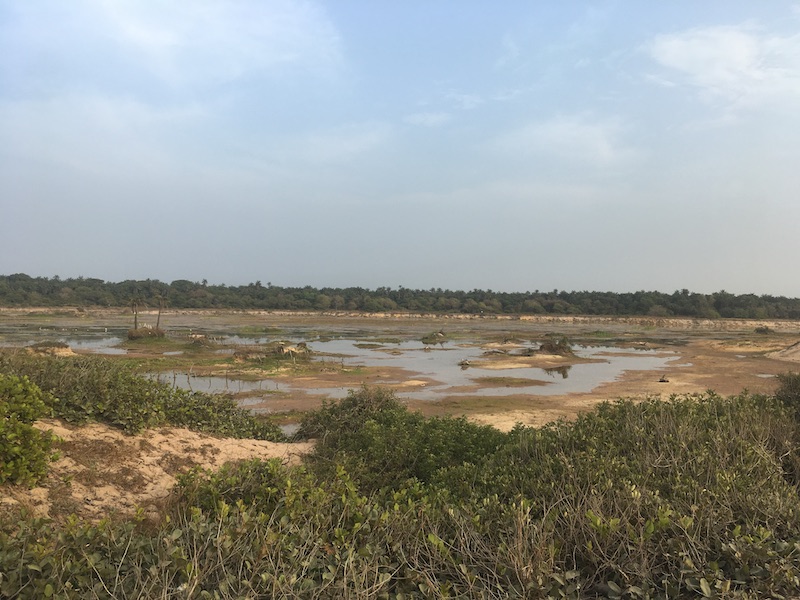
The freshwater at Gunjur Quarry is important for Ospreys and a range of other migrants from Europe (Tim Mackrill)
Our visits to Gunjur demonstrate that if the conservation of migratory species like Ospreys is to be truly effective, it is essential to protect key overwintering areas, as well as breeding sites. Another example of this came a little further down the coast when we were privileged to join a team of UK and Gambian bird ringers at the Kartong Bird Observatory (KBO). The team at Kartong, led by Colin Cross, Olly Fox and Roger Walsh, has been undertaking vital survey and monitoring work at Kartong, close to the Gambia’s southern border with Senegal, for almost ten years. In that time, they have demonstrated how important this part of the coast is for winter migrants from the UK and Europe. They also provide valuable training opportunities for local Gambians. One of the current recipients of that training is Dembo Jatta, who has been working at KBO for the past two years. He and fellow Research Assistant, Michael Colley, have just become the first Gambians to be granted British Trust for Ornithology C ringing permits (meaning they are now qualified to ring birds without supervision). Dembo, who hopes to study Conservation Biology at university with support from OLF through our Stars of the Future scheme, led a two-hour bird ringing demonstration for our group. In that time, a range of migrant species including Melodious Warbler, Wryneck, Hoopoe and Grasshopper Warbler were caught and ringed, along with African species such as Bearded Barbet and Oriole Warbler. We were greatly impressed by the knowledge that Dembo and Michael, as well as the other Gambian trainees, showed during the ringing demonstration and the engaging way they talked through the ringing process with our group.
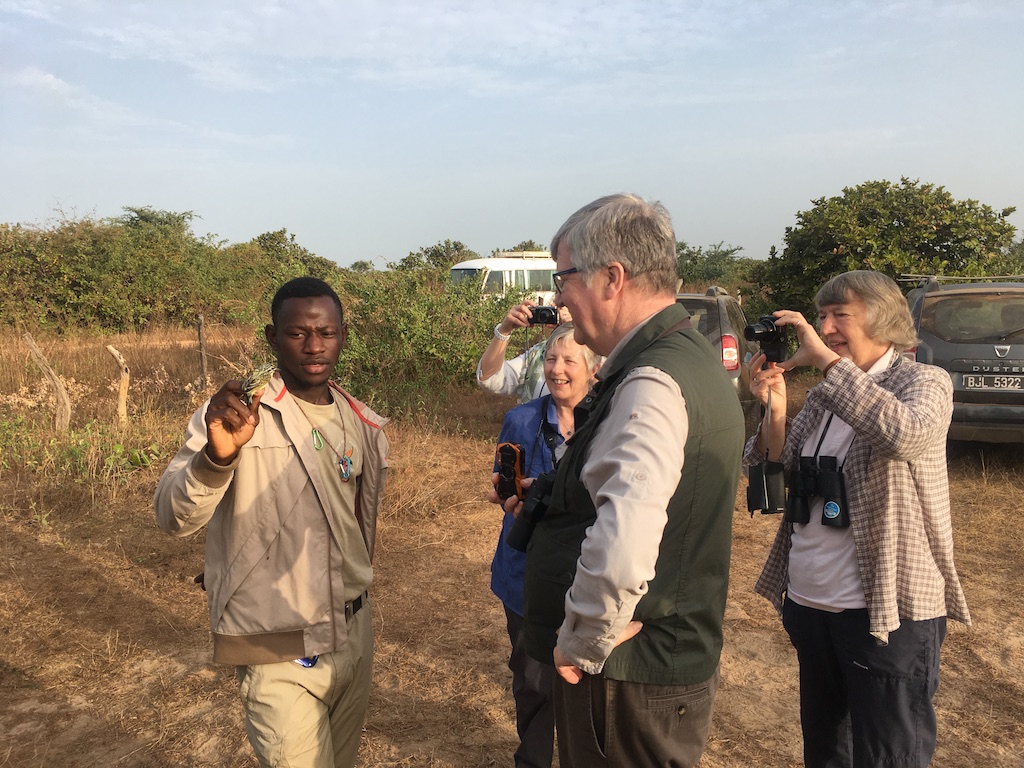

Dembo Jatta led a brilliant ringing demonstration at Kartong Bird Observatory, where the birds caught incuded migrants like Hoopoes (right) and African species such as Yellow-fronted Tinkerbirds (left)
After the ringing Dembo joined us for a walk along Kartong beach where he, Michael and other members of the KBO team have been undertaking weekly surveys of waders, terns and other coastal species, including Ospreys. They have identified several notable colour-ringed Ospreys this winter – more on that soon.
Another Kartong resident who has benefitted from the opportunities provided by KBO is Naffie Sarr. Naffie was a member of our Osprey club at Kartong school for three years, and in that time developed an interest in the environment and nature which she has been able to develop at KBO. Naffie joined us after the ringing demonstration and then spent the rest of week with our group to learn more about Ospreys, develop her bird ID skills and to join us for visits to two of the schools currently involved in the Osprey clubs scheme. Naffie has ambitions to turn her interest in nature into a career and, like Dembo, we are delighted to be supporting her through the Stars of the Future scheme. We were particularly pleased that Naffie was able to join us on visits to Tanji Lower Basic School and Tanji Life Lower Basic School where we delivered letters to students written by children at two Rutland primary schools, Brooke Priory and Whissendine. In the letters the children introduced themselves and talked about life in Rutland – including, of course, the Ospreys.
It was great to hear that a few days after our visit, Mr Gibba, the headteacher at Tanji Life, arranged for the children to paint Osprey murals on the walls of the school, with the help of Dutch artists. They copied the brilliant artwork of John Wright from Ozzie’s Return and Fiona Gomez from Ozzie Leads the Way – and we think they look great. The children also replied to the letters from their new friends at Whissendine school, which Rutland Osprey Project Education Officer Ken Davies and I were delighted to deliver once we were home. We firmly believe that migratory birds like Ospreys – who themselves do not recognise country borders – can help foster important international links and friendships. And what better place to start, than in schools? The fact that Ospreys from as far afield as northern Scotland and Dorset have been seen in The Gambia recently shows just how important this part of the West African coast is to wintering Ospreys from the UK.
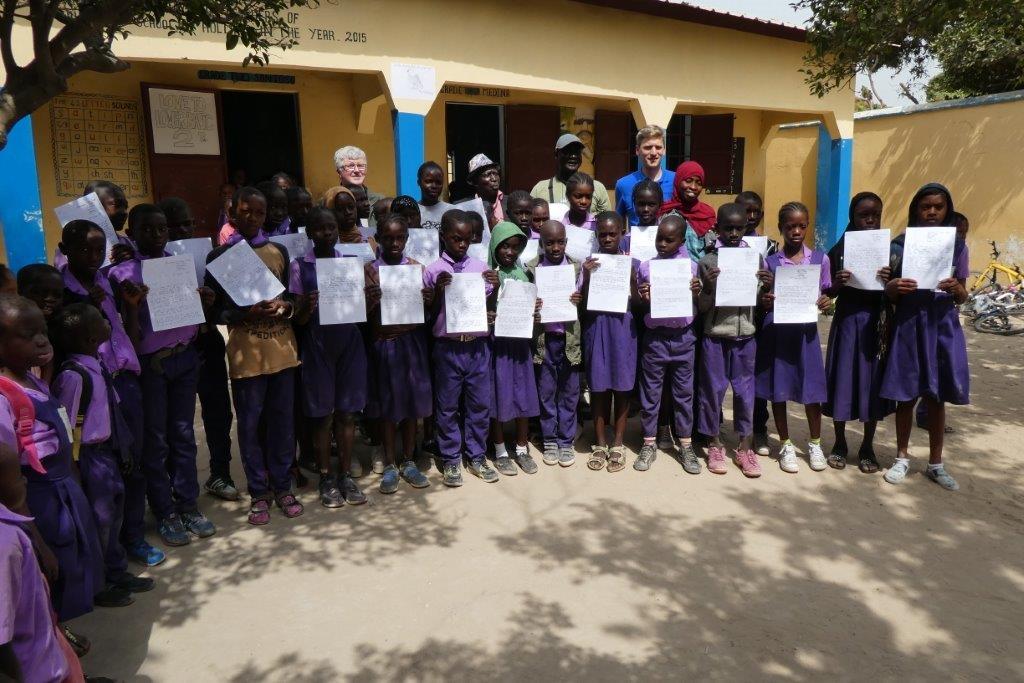
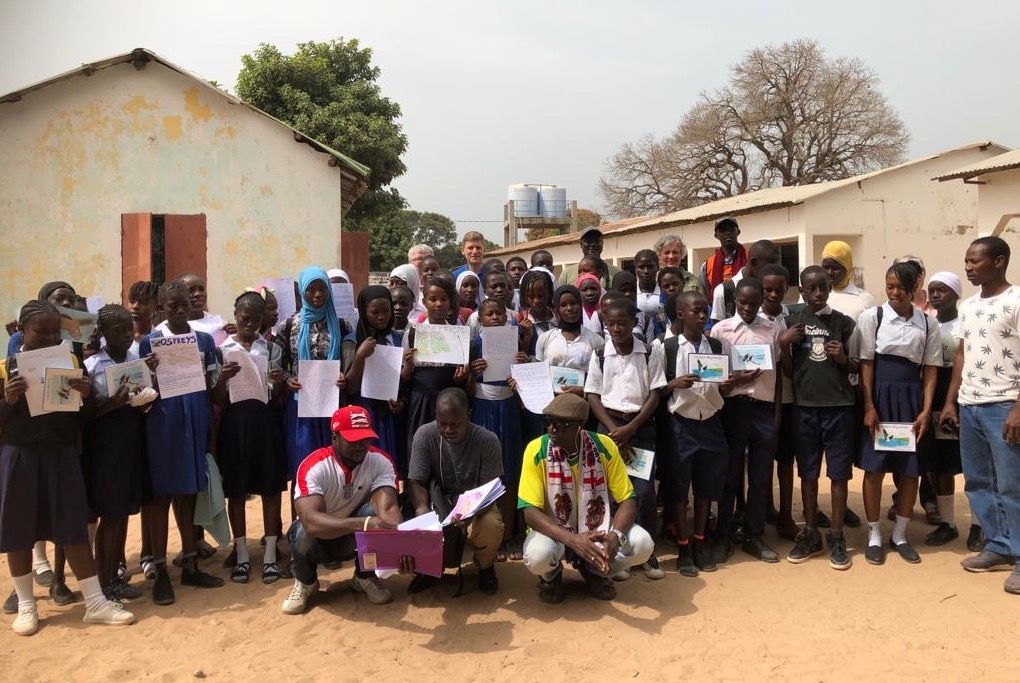
Above: Children from Tanji Life Lower Basic School (left) and Tanji Lower Basic School (right) with letters written by children from Whissendine Primary and Brooke Priory schools in Rutland
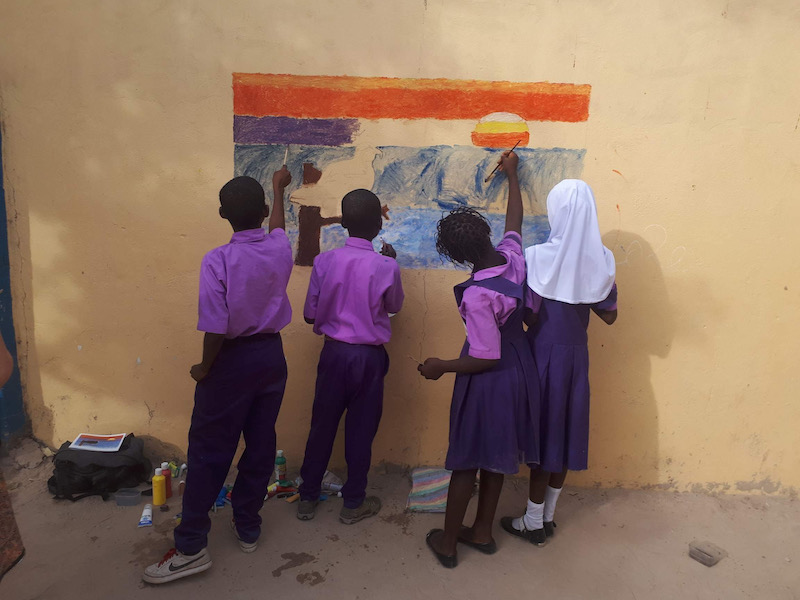
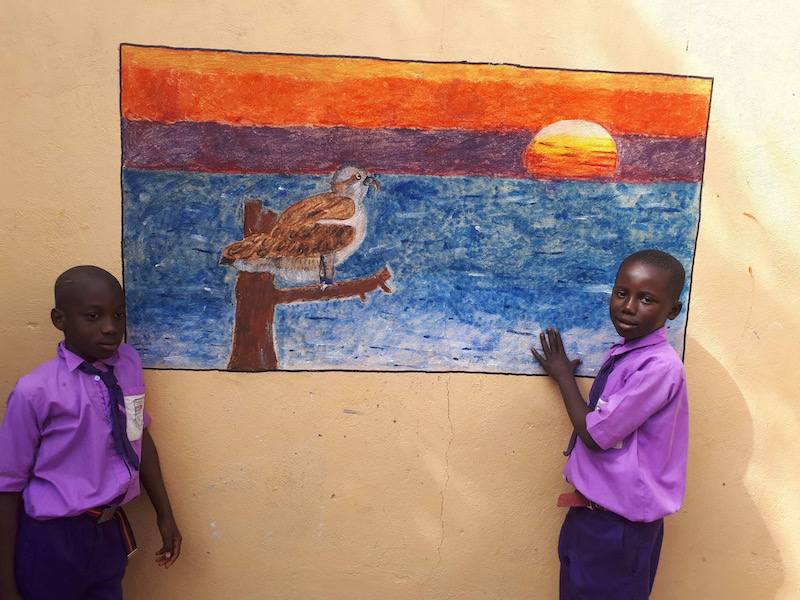

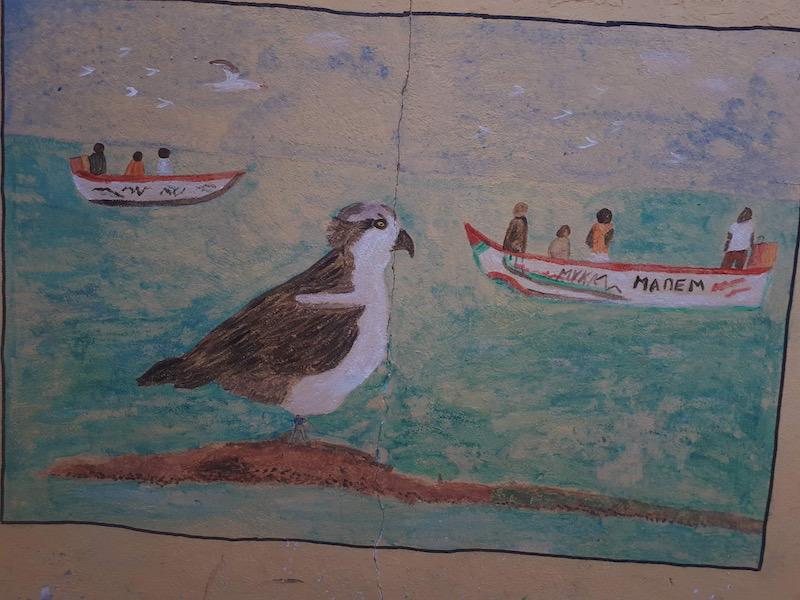
Pupils at Tanji Life Lower Basic painted Osprey murals on the school walls, with help from Dutch artists (Momadou Gibba)
It is clear that birds like Ospreys can inspire young people – from the UK and The Gambia – to take more of an interest in nature, and that’s why we are so pleased that Naffie and Dembo are keen to develop their skills, knowledge and academic qualifications with a mind on a future career. We know they both have potential to be conservation leaders of the future. In fact, they’re already showing real leadership in the work they are currently doing. For example after a lull of a couple of years, we are now reinstating the Osprey club at Kartong school and, after we left, Naffie visited the school along with Junkung Jadama, who coordinates OLF’s work with schools in The Gambia. As an ex-pupil Naffie is a wonderful role model for the current students and, we hope, will inspire others to follow her example.
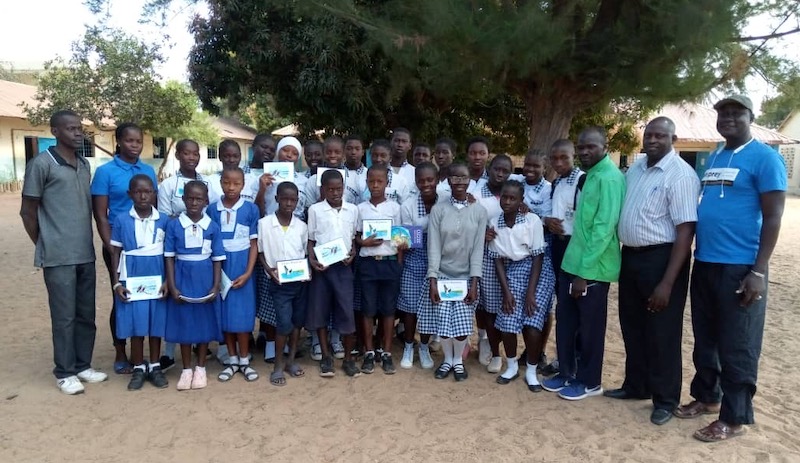
Naffie Sarr (back row second left) and Junkung Jadama (far right) with pupils from St Martin’s Basic Cycle School in Kartong. Naffie was a member of the Osprey club here for three years and now is helping to inspire the current pupils about the enviornment and nature
By the end of our week-long visit to The Gambia, which included a day in the Casamance region of southern Senegal, we had logged a total of 210 bird species and hundreds of individual Ospreys. This included colour-ringed birds from Germany, France, Finland and the UK, including some we have seen on previous visits. For me, seeing known Ospreys on their wintering grounds really brings migration to life. One morning we saw 3PV a German adult male Osprey near Tanji. Myself, Paul Stammers and John Wright first encountered this particular bird, who was ringed as a nestling in Germany in 2009, on 17th January 2011, during our first visit to The Gambia with the Rutland Osprey Project. This particular bird is distinctive because unlike most European Ospreys he doesn’t have brown ‘eyebrows’, which gives him a striking white-headed appearance.
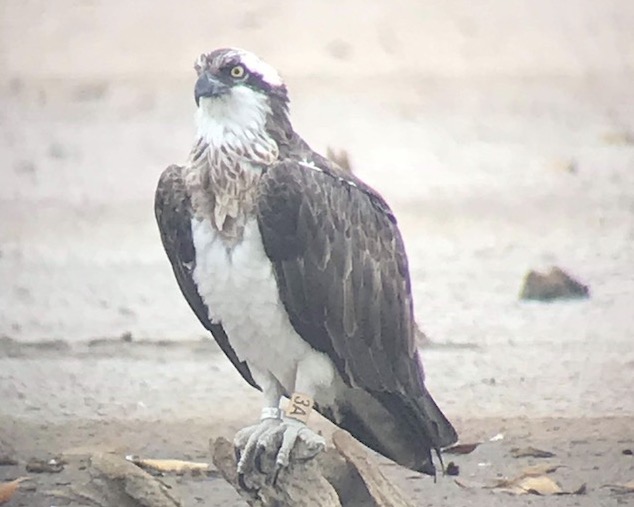
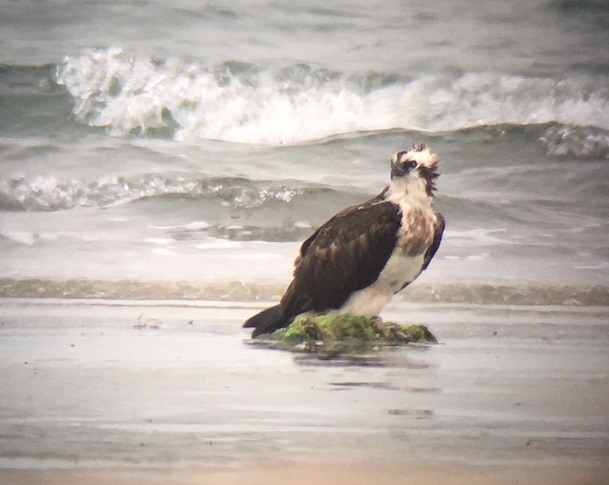
Osprey 3A from France (left) (Chris Wood) and 3PV from Germany (right) (Tim Mackrill). We first saw 3PV at Tanji in January 2011
Seeing an old friend, like 3PV, at almost exactly the same location as nine years ago (4.5 km to be precise), is something very special indeed. It is also a pleasure to enjoy sightings like this with a like-minded group of people who share the same enthusiasm and interest. Some of the members of our group have visited The Gambia several times before, while for others this was their first visit. What they all had in common was a shared interest in Ospreys. Everyone on the trip is a Friend of OLF, and it is no exaggeration to say that the work we’re doing simply wouldn’t be possible without their valuable support. They were also great fun to spend a week with. To find out how you can become a Friend of OLF and support our work in both The Gambia and the UK, please click here.

Our group at the end of a fantastic week
On our last afternoon we walked along Gunjur beach and watched two Ospreys fishing just offshore. It is remarkable to think that in just a few weeks’ time these birds will be heading north towards Europe. Through their amazing migrations Ospreys link the UK with countries like The Gambia. The sight of the two birds fishing as the sun dropped towards the western horizon was another reminder that we have one shared planet, in desperate need of protection. It is essential we all work together to do just that.
